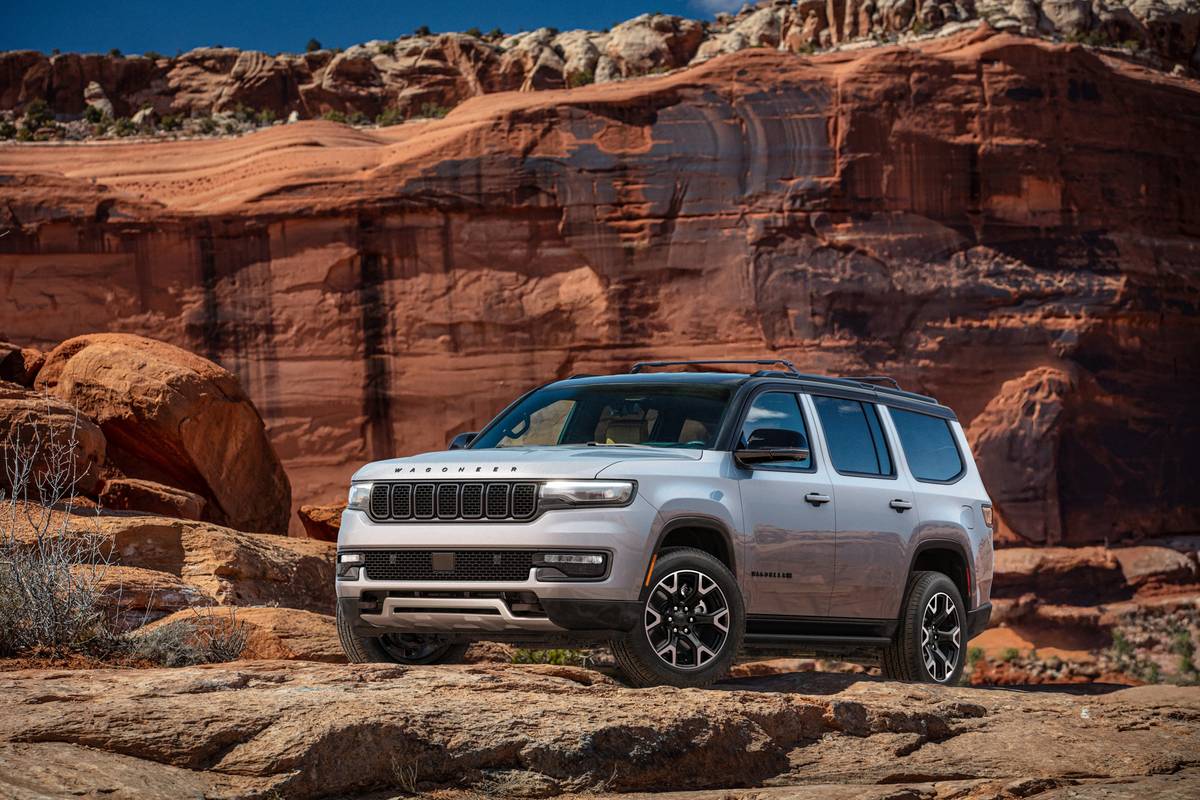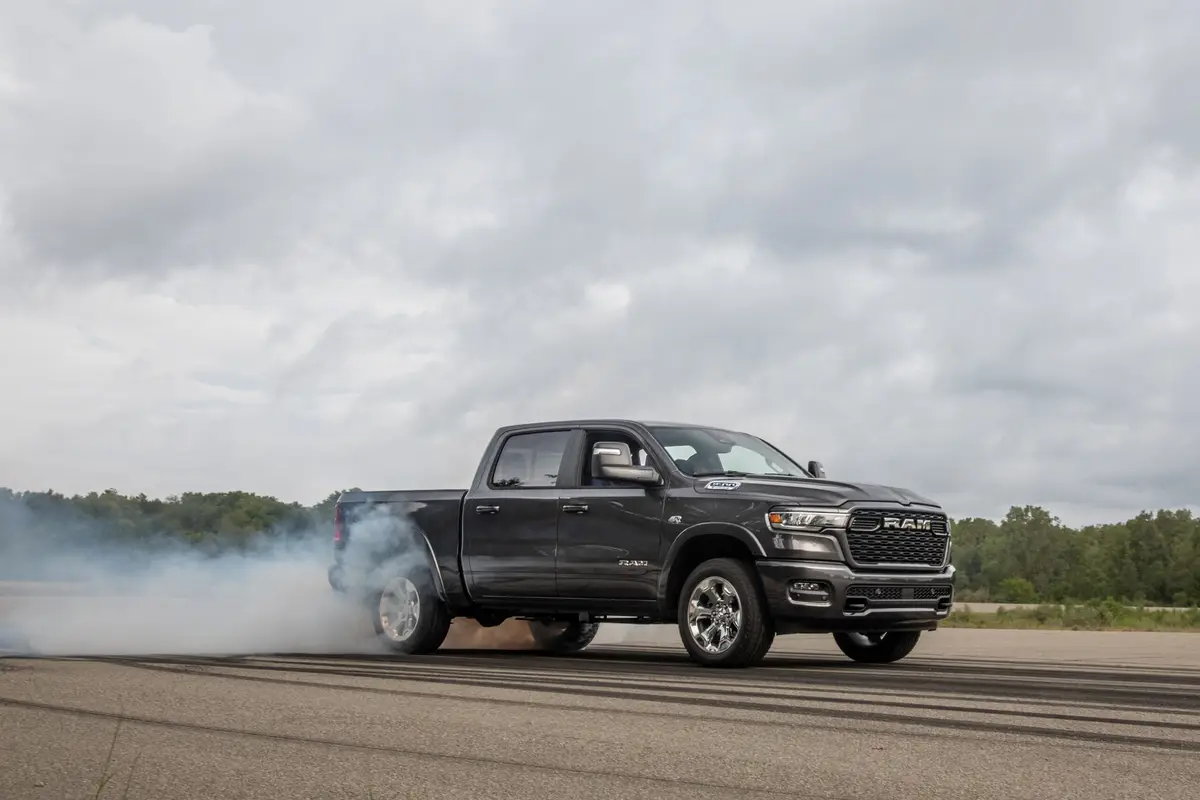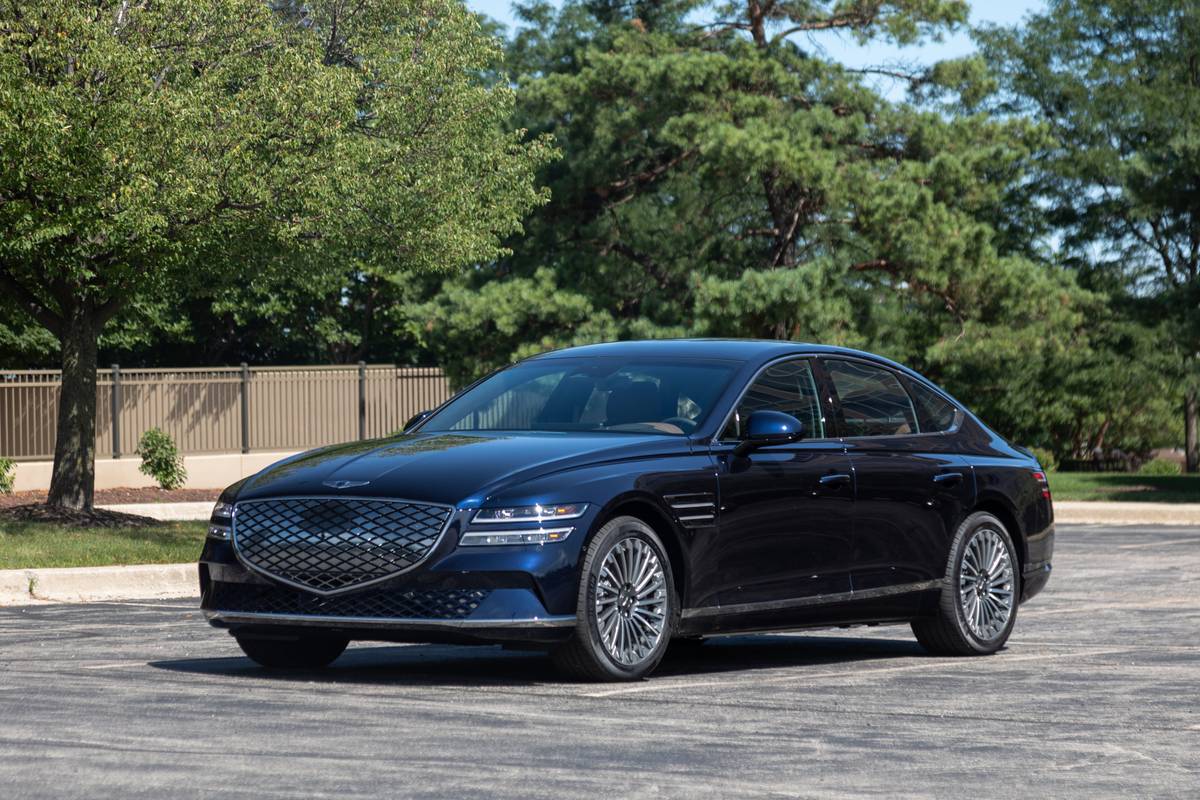Cincinnati.com's view
This is really sort of a pitiful tale. Pontiac stylists blew the design of the Aztek so badly that, in a virtually unprecedented move, they brought it back in for a makeover before its first year was out.
And made it worse. The first assertion is beyond dispute; the second, re the reworking, is my humble opinion, but you know I’m right.
Granted, after Aztek fell on its puss with a thud approaching thermonuclear, it couldn’t have been easy for the design team to extract much money from the bigs at General Motors for the trip to Elizabeth Arden.
So some brilliant little toadie suggested (pure speculation here) that they take off the side cladding and use the money thus saved to put a rear spoiler on it. A wash, and surely that’ll cure the problems that resulted from being “ahead of the marketplace” with the original design, right?
If the buying public were that dumb, Yugo would be a top seller.
Here’s the deal; if you’re going make a polarizing vehicle, i.e., one that people either love or hate, halfway measures don’t cut it. You go for broke, and if your instincts are right, it’ll be the next PT Cruiser or New Beetle. If you’re wrong, it’s the next Edsel . . . or Aztek. In which case, you cut your losses.
The Aztek as originally penned succeeded brilliantly in looking like nothing else on the road – from some angles actually fairly appealing – but had a rear end only a proctologist could love. All that putting a spoiler on the rear window did was further degrade already marginal visibility.
And taking the cladding off deprived the machine of one of its more appealing design elements, a bold, overstated, typically Pontiac bit of flair that suggested good times in the wilderness. What they left us with now screams “base model.”
Alas, in this less-than-perfect world, looks DO count, or I’d be anchoring the national news and the phantom wouldn’t have to lurk in the subterranean reaches of the Paris Opera House. Physiognomy aside, the Aztek has much to recommend it.
It’s quite a multi-talented machine, partaking of some of the qualities of a sedan, some of an SUV and some minivan virtues, too. I can buy Pontiac fatuously calling it a “life-style support vehicle,” though they may be going a bit far when saying it’s “quite possibly the most versatile vehicle on the planet.”
They’ve simplified the lineup this year so your only choices are front-wheel-drive or all-wheel-drive. Within those sets, you can pick between a 50/50 folding rear seat or two captain’s chairs back there.
The folding seat or the captain’s chairs can be parked in your garage, which opens up 93 cubic feet of play space (if you’re going to use it as a camper), or work space, if you want to take advantage of Aztek’s ability to haul 4×8 sheets when its tailgate is dropped. As illustrated in the photo on the following page, dealers have a custom-made camper tent extension for those who regret man’s evolution to the stage of being able to create motel chains.
In its sparest form, the Aztek comes with a 3.4-liter V-6 engine, 16-inch aluminum wheels, a four-speed automatic transmission, the normal power assists, front and side air bags, antilock brakes, rear defogger, 12-can cooler-console, air conditioning, tilt steering wheel, four 12V power taps, cargo cover and net, and an AM/FM/CD six-speaker stereo with equalizer – all that for an appealing asking price of $19,995. It’s looking better, isn’t it?
The all-wheel-drive version lists for three grand more, a pretty hefty premium for a rig that lacks a center differential lock and low range. According to the research firm Edmunds, Azteks on average are going for about $1,500 UNDER sticker. Of course, this being GM, you can ladle on the options.
I was lent a front-wheel-drive version, with the optional “Hanglide” seat treatment – pretty snazzy-looking two-toned charcoal with bold red accents.
Upon saddling up, I soon found myself ru ut of rearward travel as I tried to adjust the driver’s seat to my liking. As a result, I felt uncomfortably close to the steering wheel and had to resort to tilting the seat farther back than I prefer. Headroom was fine. The rear bench might serve for kiddies, but not long for big folks.
The engine is the ancient and honorable overhead-valve V-6. It’s tuned here to make 185 hp up at 5,200 rpm, after which it quickly gets breathless, and 210 foot-pounds of torque at 4,000, unusually high for the type. In practice, it seemed just adequately responsive, carrying as it does 3,800-odd pounds in FWD form. The AWD Aztek weighs more than 4,000 pounds.
The four-speed automatic transmission was simply superb, smooth as the foam on a cappuccino. It didn’t even get flummoxed when asked for a quick step down a cog or two.
Overall gearing was high enough that it wasn’t obvious at moderate speeds whether the console-mounted shifter was in overdrive or pulled back to third gear, as I often felt necessary to do for compression braking. There’s no telltale amid the main instrument pack to denote gear selection — five demerits.
The tester had, as part of an options package, all-speed traction control. I put that to the test by stomping the gas pedal on rain-slick pavement and it worked quite well, applying braking force and cutting engine power until grip was reestablished. Similarly, the antilock brakes (fifth-generation Bosch equipment) functioned very efficiently and unobtrusively. FWD models have vented discs in front, drums rear; AWDs get vented discs fore and aft.
Ride quality was very good on a variety of paved surfaces, handling was decent, and there was no front-drive squirming or other nastiness.
The Aztek got so-so ratings on the federal crash tests. On the National Highway Transportation Safety Administration’s five-star scale, the Pontiac got three stars for driver protection, four for co-pilot protection in a 35-mph frontal barrier test. In a side impact, the front compartment was top-rated, the rear just three stars. The test vehicle had side air bags, too. The insurance industry’s 40-mph frontal offset crash test is much more rigorous. On that sequence, the Aztek was rated marginal. Only the Chevrolet Blazer, Oldsmobile Bravada and GMC Jimmy received a worse mark, “poor,” in the midsize sport-utility class.
The Aztek has a two-piece rear hatch. The glass flips up, and then one can release the tailgate, an arrangement preferable to having a once-piece hatch.
The stereo was surprisingly good for this price point. The tuner had extraordinary sensitivity, the speakers seemed to be of high quality and overall tonality was quite good. A variety of preprogrammed equalizer settings are supplemented by bass, midrange and treble tweakers.
The test machine had a few extras. The “comfort and security” package, $3,150, brings 6-way power driver’s seat; remote keyless entry; deep tinted rear window glass; custom interior; sliding rear cargo tray; cruise control; traction control; anti-theft system; OnStar communication system; leather-wrapped steering wheel, and roof rack. Self-sealing tires cost $150, and the Hanglide seat d’cor, $100. Total, with freight, was $23,945. Payments at that price would be $485, assuming 20 percent down, 10 percent interest and 48 payments.
Azteks are assembled in Ramos Arizpe, Mexico, just across the border from Del Rio, Texas. The natives must think they’ve gotten into some bad mezcal when they see these dudes being road-tested.
“The Gannett News Service”
Latest news



